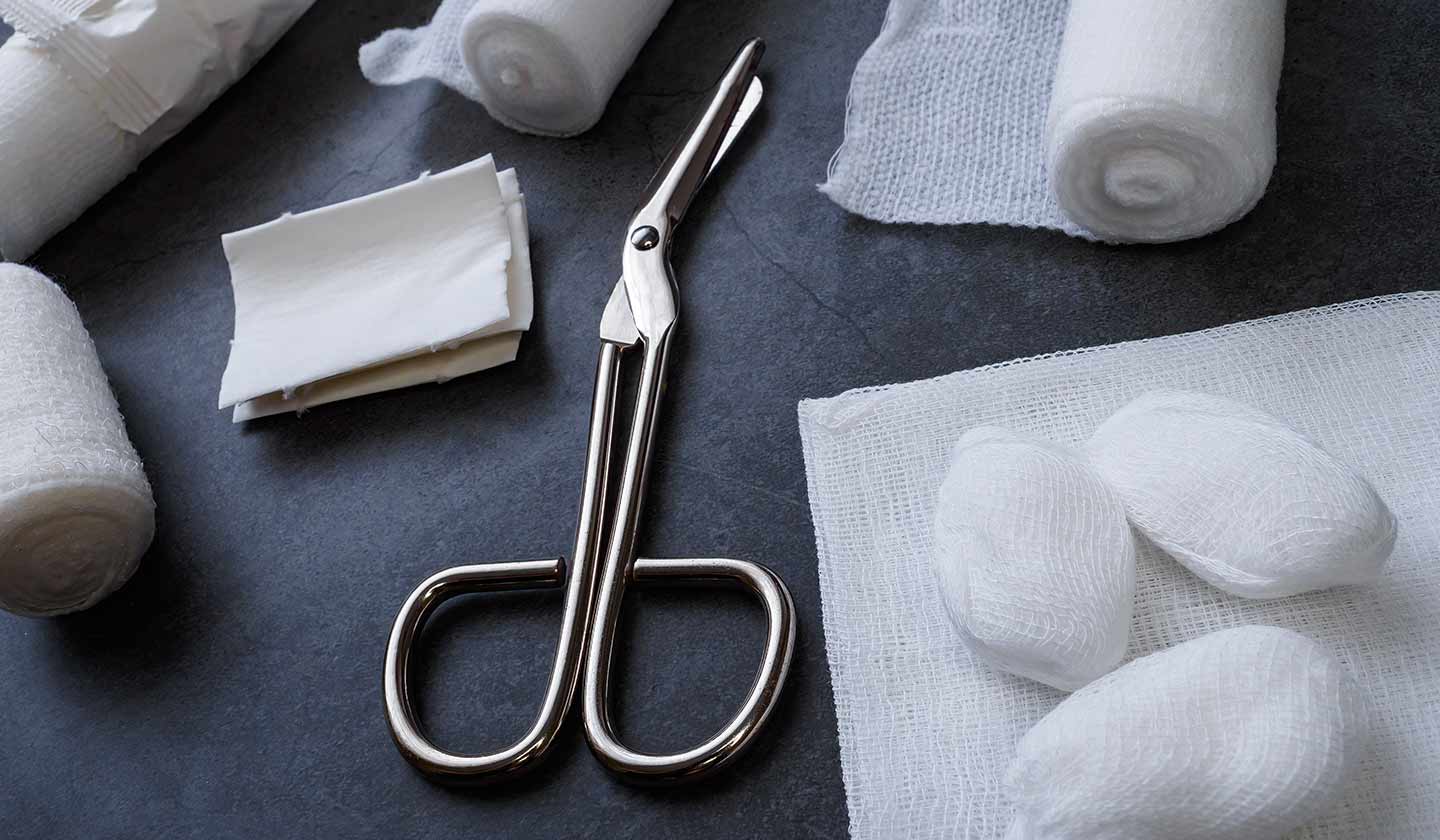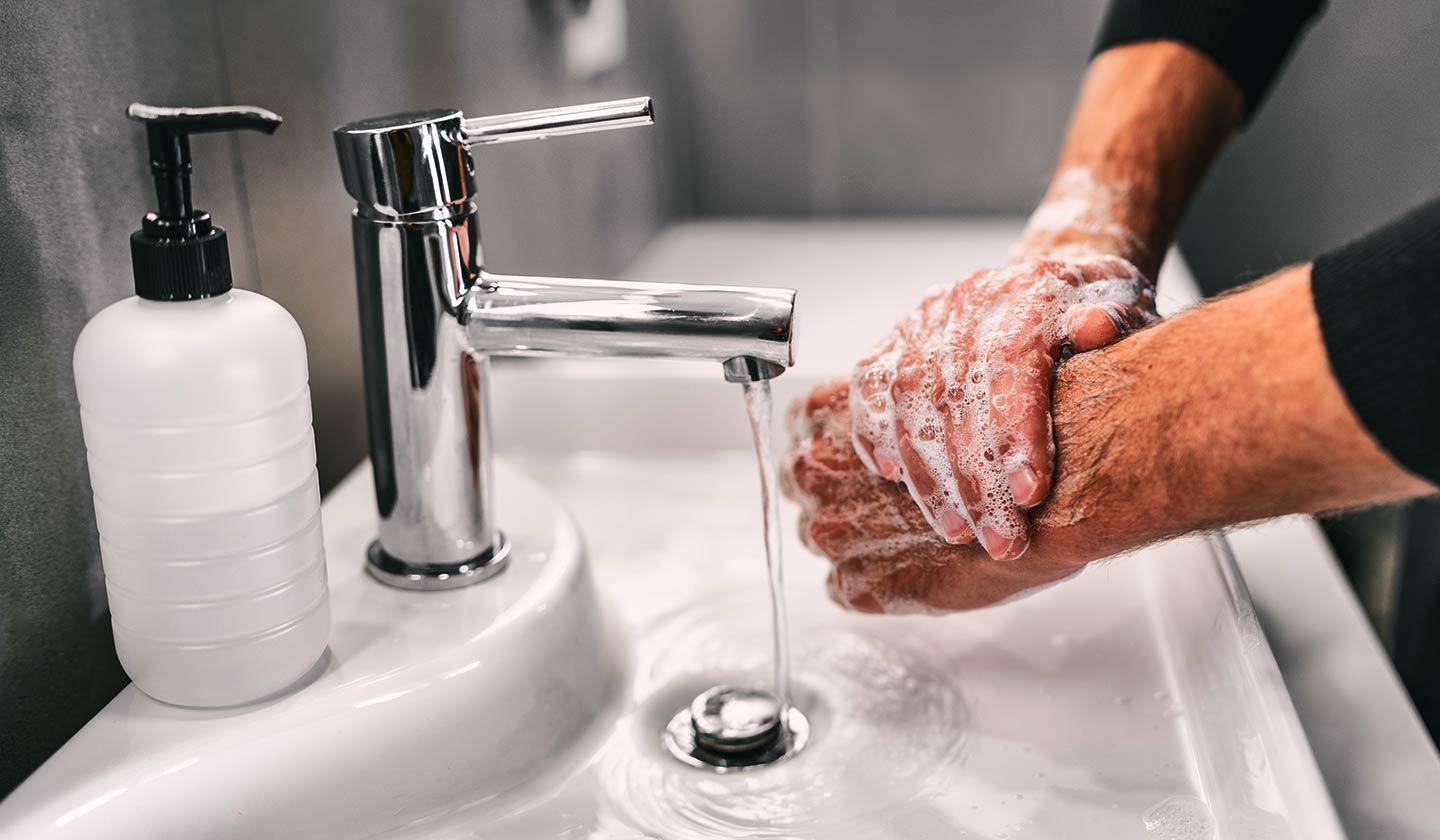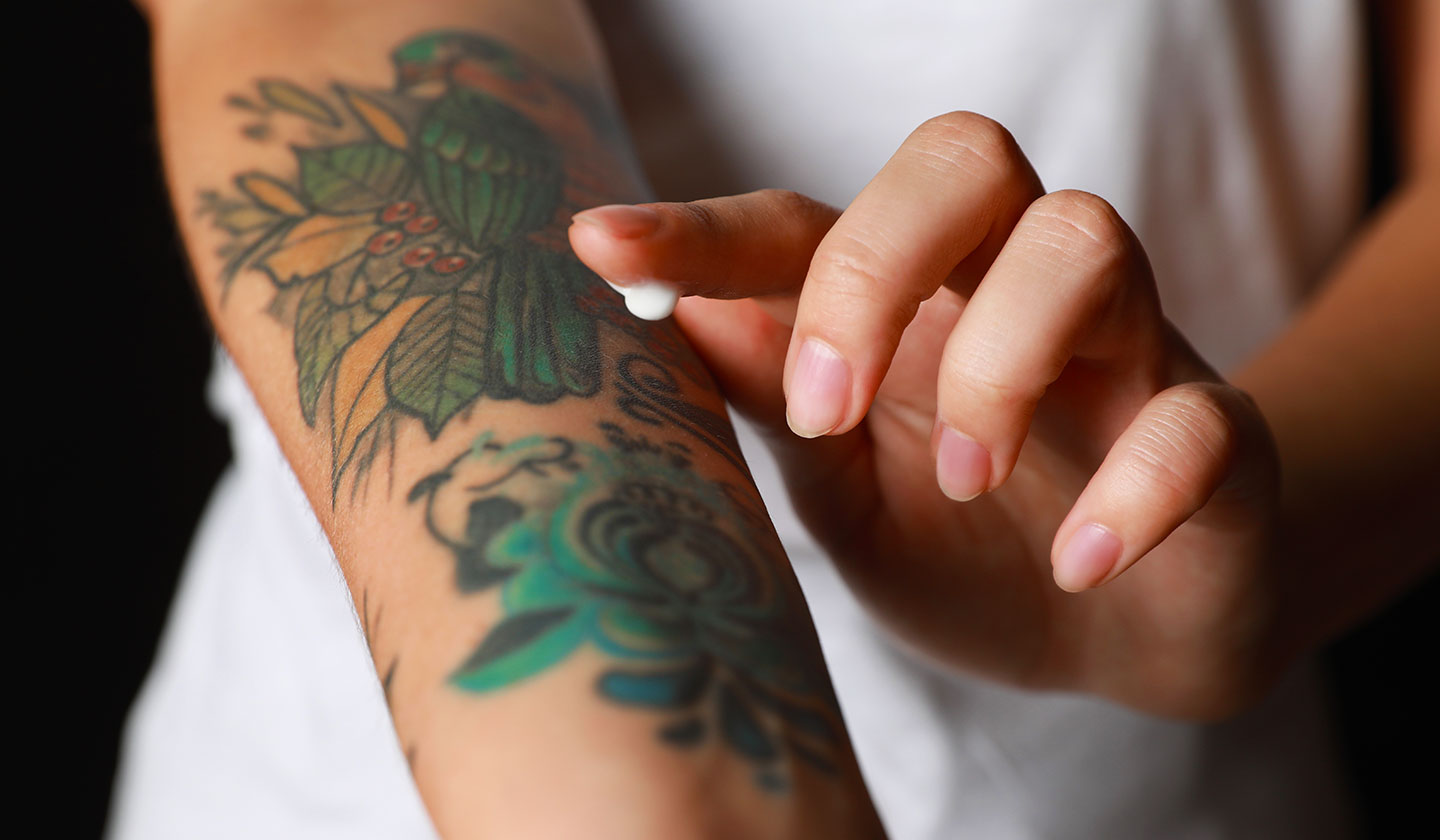Dermatology
Tattooing - Care soon after tattooing

Tattoo comes from tatau, "to make a mark or drawing", from the Tahitian. The word was introduced in 1769 into the English language by British navigator Captain James Cook (1728 - 1779). When Cook arrived in Tahiti in 1769, he first observed the practice of cutting the skin and injecting a black ink to make permanent designs on the body. Because of the very hot climate, the inhabitants of the Polynesian islands used to wear very little clothing but liked to decorate their bodies to make them look more attractive. The custom spread among sailors, but because of their bad reputation, tattoos were considered distasteful for two centuries.
Recently, Polynesian art has once again been considered a beautiful way of beautifying the human body and tattooing has become very popular, especially among young people. The curious thing is that, by coincidence, in Tahiti the tattoo was always done on people between fourteen and eighteen years old, exactly like the fashion that attracts young people nowadays.

Care immediately after tattooing
1. Talk to the tattoo artist about aftercare.
When the tattoo is done, but before you leave the studio, take a few minutes to talk to the professional about care guidelines. The general recommendations apply to everyone, but the tattooist can personalise some tips to suit you. He or she may also recommend products such as soaps or lotions from specific brands.
- Some tattoo studios sell care kits. See if there is this option in the establishment.
- Generally, it is the professional who should give you care instructions without you having to ask. If they don't, don't hesitate to ask.

2. Leave the dressing on for at least five hours.
A good professional should cover the tattoo as soon as you see the result. There are different opinions on how long the patch should be left on the skin, but five hours is usually the minimum time that is considered safe.
- Also ask the tattooist for his opinion.
- A thick, absorbent bandage can stay on overnight or for 24 hours. It is always better to leave the bandage on longer than to wash it off in a dirty environment, so don't be afraid to wear it for a while.
- The patches should stay on the skin for a few hours only, as the gauze gets too saturated and the film does not let the skin breathe. Leave them for two or three hours for the healing to start, but then remove them so that the process continues.

3. Wash your hands before removing the dressing.
Before coming into contact with your new tattoo for the first time, be sure to wash your hands thoroughly with an antibacterial soap and warm water. Remove the bandage carefully so as not to pull or tear the skin that is healing.
- Once you have removed this first dressing, you should not apply another one. A few drops of blood and discharge are normal for the first few days and there is no need to protect the site again.

4. Wash the tattoo carefully using your fingers.
Immediately after removing the dressing, use warm water and a mild soap without perfume to wash the area that was covered. Rinse off any suds with water before patting the skin dry with a clean piece of paper towel or a non-woven pad.
- Avoid extreme temperatures. The ideal temperature for water is room temperature.
- Use a mild soap. The ideal is a product without perfume, without dyes and without aggressive substances.
- Do not use a towel or sponge to wash the tattoo. These materials are abrasive to the sensitive skin and can transfer bacteria.
- Remove all traces of blood. If you let dried blood stick to the skin, there is more chance of large crusts forming.

5. Apply a thin layer of a light moisturiser.
With clean fingers, apply a thin layer of lotion or ointment to dry skin. Leave the tattoo outdoors as long as possible so that the moisturiser is absorbed without risk of irritation.
Unscented and hypoallergenic ointments and lotions are good moisturising options. Lotions dry faster and ointments may increase the likelihood of scabs forming during healing in some cases.
Apply a sufficient amount to cover the entire tattoo with a transparent layer. The skin should not be greasy or filled with product.

6. Leave the tattoo uncovered or wear loose-fitting clothing.
Soon after removing the patch, the healing process begins, along with the formation of scabs. Whenever possible, leave the tattoo uncovered. If you need to cover up the area, use a loose-fitting garment made of a light, breathable fabric.
The tattoo should release clear plasma and excess ink in the first few days. During this period, try to wear clothes and linen that may get stained or dirty.
Always follow the tattooist's instructions
Many professionals use pads that should be removed after a few hours, but nowadays it is common to use one that should cover the tattoo for three days. Before leaving the tattoo studio, ask all the necessary questions so you know exactly how to proceed. Do not leave the place while you are in doubt.
Tips
If the tattoo is on a region covered by clothing, wear loose and breathable garments during healing. This prevents the tissue from irritating the sensitised skin and prevents the formation of "scabs".
Materials required
- Mild antibacterial soap.
- water
- clean paper towel
- ointment, lotion or moisturizer.
- loose clothing
- sun cream.
Ana Margarida Neto
(Pharmaceutical - Biotifar Pharmacy)
Também lhe poderá interessar
Dermatology
Tattooing - Improving the healing process
Dermatology






